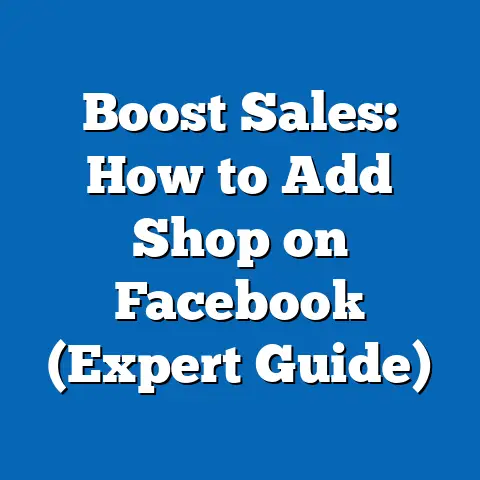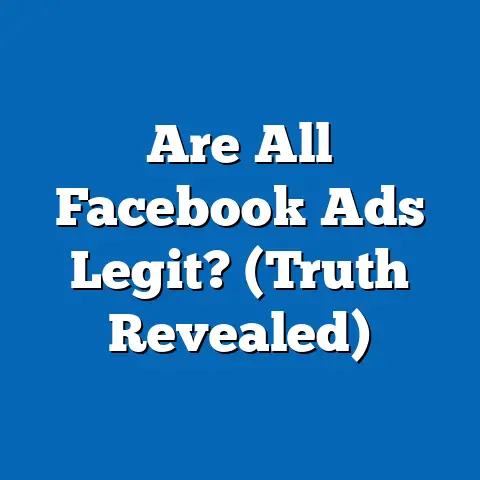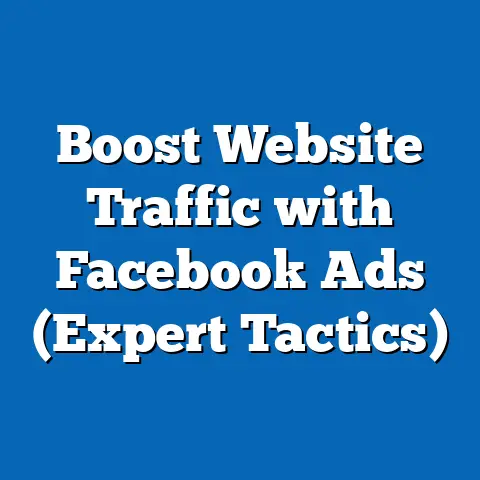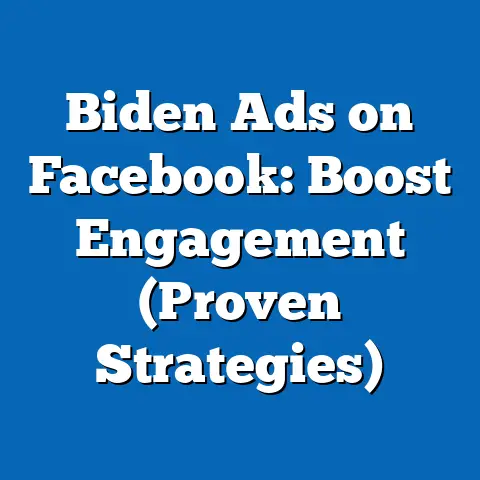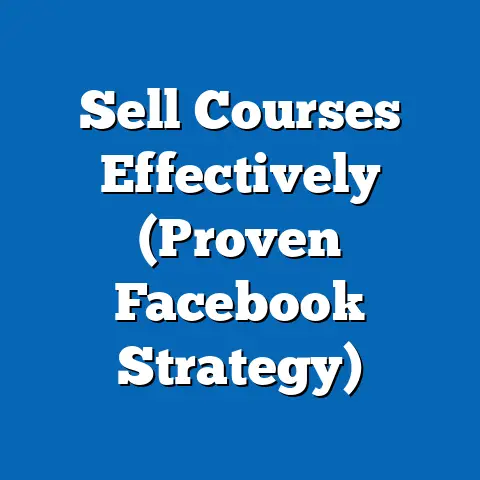Mastering Facebook Ads API (Powerful Strategies Unveiled)
As consumers become increasingly aware of their environmental impact, businesses are scrambling to offer sustainable products and services. But having a great eco-friendly product is only half the battle. You need to reach the right audience with the right message. This is where targeted advertising becomes crucial, and in my experience, there’s no better tool for precise targeting than the Facebook Ads API.
I’ve spent years navigating the ever-changing landscape of digital advertising, and I’ve seen firsthand how the Facebook Ads API can transform marketing campaigns, especially for businesses focused on sustainability. It’s not just about reaching more people; it’s about reaching the right people – those who genuinely care about the environment and are actively seeking eco-conscious alternatives.
Section 1: Understanding the Facebook Ads API
What is the Facebook Ads API?
The Facebook Ads API (Application Programming Interface) is a powerful tool that allows developers and marketers to interact with Facebook’s advertising platform programmatically. Instead of manually managing ads through the Ads Manager interface, the API enables you to automate and customize various aspects of your campaigns, from ad creation and targeting to performance tracking and optimization. Think of it as a backstage pass to the inner workings of Facebook Ads, giving you unparalleled control and flexibility.
Traditional Advertising vs. API-Driven Marketing
Traditional Facebook advertising methods involve using the Ads Manager, a user-friendly interface that allows you to create and manage campaigns manually. While this is suitable for small-scale campaigns or businesses with limited technical resources, it can become cumbersome and inefficient for larger, more complex operations.
API-driven marketing, on the other hand, offers a more streamlined and scalable approach. By using code to interact with the Facebook Ads platform, you can automate repetitive tasks, implement advanced targeting strategies, and gain deeper insights into your campaign performance. This is particularly beneficial for businesses that need to manage multiple campaigns, target niche audiences, or integrate their advertising efforts with other marketing tools.
Benefits of Using the Facebook Ads API for Sustainability-Focused Businesses
For businesses with a focus on sustainability, the Facebook Ads API offers several key advantages:
- Precise Targeting: Reach environmentally conscious consumers with laser-like accuracy by leveraging the API’s advanced targeting options.
- Personalized Messaging: Craft tailored ad creatives and messages that resonate with your target audience’s values and concerns.
- Automated Optimization: Continuously refine your campaigns based on real-time performance data, ensuring maximum ROI.
- Scalability: Easily manage and scale your advertising efforts as your business grows, without being limited by manual processes.
- Integration: Seamlessly integrate your Facebook Ads campaigns with other marketing tools and platforms, creating a unified marketing ecosystem.
Examples of How the API Can Streamline Ad Creation, Targeting, and Performance Tracking
Let me share a personal example: I once worked with a small business selling organic, fair-trade coffee. Using the Facebook Ads Manager, they were struggling to reach their ideal customer – environmentally conscious coffee lovers. We decided to implement an API-driven strategy.
By using the API, we were able to:
- Automate ad creation: We created a script that automatically generated ad variations based on different product attributes and customer segments.
- Implement advanced targeting: We used the API to target users who had expressed interest in organic products, fair-trade practices, and environmental conservation.
- Track performance in real-time: We set up custom dashboards that provided real-time insights into key performance indicators (KPIs), such as cost per acquisition (CPA) and return on ad spend (ROAS).
The results were remarkable. Within a few weeks, the business saw a significant increase in sales and a substantial improvement in their advertising ROI. This experience solidified my belief in the power of the Facebook Ads API for businesses focused on sustainability.
Takeaway: The Facebook Ads API is a game-changer for businesses seeking to reach environmentally conscious consumers effectively. By understanding its capabilities and benefits, you can unlock new opportunities for growth and impact.
Section 2: Setting Up Your Facebook Ads API
Initial Steps: Prerequisites and Necessary Tools
Before you can start using the Facebook Ads API, there are a few prerequisites you need to meet:
- A Facebook Business Account: You’ll need a Facebook Business Account to manage your advertising activities.
- A Facebook Page: Your business must have a Facebook Page to run ads.
- An Ad Account: You’ll need an ad account associated with your Business Account.
- Basic Programming Knowledge: Familiarity with programming concepts and languages like Python, PHP, or JavaScript is essential.
- A Code Editor: A code editor like VS Code, Sublime Text, or Atom will be necessary to write and execute your API scripts.
- An API Client: Tools like Postman or Insomnia can help you test and debug your API requests.
Creating an App on the Facebook Developer Platform and Obtaining Access Tokens
Once you have the prerequisites in place, the next step is to create an app on the Facebook Developer platform:
- Go to the Facebook Developer website: Navigate to https://developers.facebook.com/.
- Create a Developer Account: If you don’t already have one, create a developer account by following the instructions on the website.
- Create a New App: Click on the “Create App” button and choose the “Business” app type.
- Provide App Details: Enter a name for your app and provide your contact email.
- Add Products: Add the “Marketing API” product to your app.
- Generate Access Tokens: Follow the instructions provided by Facebook to generate access tokens for your app. You’ll need these tokens to authenticate your API requests.
Best Practices for Managing Permissions and Ensuring Data Privacy
When using the Facebook Ads API, it’s crucial to manage permissions carefully and ensure data privacy. Here are some best practices to follow:
- Request Only Necessary Permissions: Only request the permissions that your app needs to function properly. Avoid requesting excessive permissions that could compromise user privacy.
- Store Access Tokens Securely: Store your access tokens securely and never share them with unauthorized parties.
- Implement Data Encryption: Encrypt sensitive data both in transit and at rest to protect it from unauthorized access.
- Comply with Facebook’s Data Use Policies: Adhere to Facebook’s data use policies and respect user privacy at all times.
Understanding Facebook’s Advertising Policies, Especially Regarding Eco-Friendly Claims
Facebook has strict advertising policies in place to protect users from misleading or deceptive ads. When advertising eco-friendly products, it’s essential to comply with these policies, particularly those related to environmental claims.
- Avoid Making Exaggerated Claims: Don’t make unsubstantiated claims about the environmental benefits of your products.
- Provide Evidence to Support Your Claims: Be prepared to provide evidence to support any environmental claims you make in your ads.
- Be Transparent About Your Environmental Practices: Clearly communicate your company’s environmental practices and initiatives to build trust with your audience.
Takeaway: Setting up your Facebook Ads API account requires careful planning and attention to detail. By following these steps and best practices, you can ensure that your advertising efforts are compliant, secure, and effective.
Section 3: Powerful Targeting Strategies Using Facebook Ads API
Advanced Targeting Options for Reaching Environmentally Conscious Consumers
The Facebook Ads API offers a wide range of advanced targeting options that can help you reach environmentally conscious consumers with laser-like precision. Here are some of the most effective targeting strategies:
- Interest-Based Targeting: Target users who have expressed interest in topics such as environmental conservation, sustainable living, organic products, and renewable energy.
- Behavior-Based Targeting: Target users who have engaged in behaviors such as purchasing eco-friendly products, donating to environmental organizations, or attending environmental events.
- Demographic Targeting: Target users based on demographics such as age, gender, location, education, and income, which can be correlated with environmental awareness.
- Custom Audiences: Create custom audiences based on your existing customer data, website visitors, or app users.
- Lookalike Audiences: Create lookalike audiences based on your custom audiences, targeting users who share similar characteristics and behaviors.
Audience Segmentation Based on Eco-Conscious Values
To maximize the effectiveness of your targeting efforts, it’s essential to segment your audience based on their specific eco-conscious values. Here are some common audience segments:
- The Eco-Activist: This segment is deeply committed to environmental causes and actively seeks out sustainable products and services.
- The Conscious Consumer: This segment is aware of environmental issues and tries to make eco-friendly choices when possible.
- The Health-Focused Individual: This segment is concerned about the health impacts of products and seeks out organic and natural alternatives.
- The Value-Driven Shopper: This segment is motivated by ethical considerations and supports businesses that align with their values.
Leveraging Custom Audiences and Lookalike Audiences to Enhance Reach
Custom Audiences and Lookalike Audiences are powerful tools that can help you expand your reach and target new customers who are likely to be interested in your eco-friendly products.
- Custom Audiences: Upload your existing customer data (e.g., email addresses, phone numbers) to create a custom audience. You can then target this audience with personalized ads or use it as a seed audience for creating a lookalike audience.
- Lookalike Audiences: Create a lookalike audience based on your custom audience. Facebook will identify users who share similar characteristics and behaviors with your custom audience, allowing you to reach new potential customers who are likely to be interested in your products.
Case Studies: Successful Targeting Strategies for Eco-Friendly Brands
Let’s look at a hypothetical case study:
Brand: “Green Clean,” a company selling eco-friendly cleaning products.
Target Audience: Conscious Consumers and Health-Focused Individuals.
Strategy:
- Create a Custom Audience: Upload a list of existing customers who have purchased Green Clean products.
- Create a Lookalike Audience: Create a lookalike audience based on the custom audience, targeting users who share similar demographics, interests, and behaviors.
- Target Interest-Based Audiences: Target users who have expressed interest in topics such as “eco-friendly cleaning,” “organic products,” and “sustainable living.”
- Craft Personalized Ads: Create ad creatives that highlight the environmental benefits of Green Clean products and emphasize their commitment to sustainability.
Results:
- Increased brand awareness among environmentally conscious consumers.
- Higher click-through rates and conversion rates.
- Improved ROI on advertising spend.
Takeaway: By leveraging the Facebook Ads API’s advanced targeting options and segmenting your audience based on eco-conscious values, you can reach the right people with the right message and drive significant results for your business.
Section 4: Optimizing Ad Performance with Facebook Ads API
Using the API for A/B Testing Ad Creatives and Messages
A/B testing is a crucial part of any successful advertising campaign. The Facebook Ads API makes it easy to A/B test different ad creatives and messages to see what resonates best with your target audience.
By using the API, you can:
- Automate the creation of ad variations: Generate multiple versions of your ads with different headlines, images, and calls to action.
- Randomly assign users to different ad variations: Ensure that each ad variation is shown to a representative sample of your target audience.
- Track performance metrics for each ad variation: Monitor metrics such as click-through rate, conversion rate, and cost per acquisition to determine which ad variation performs best.
Key Performance Indicators (KPIs) to Monitor for Sustainability-Focused Campaigns
When running sustainability-focused campaigns, it’s essential to monitor KPIs that reflect your environmental goals. Here are some key KPIs to track:
- Cost Per Acquisition (CPA): How much does it cost to acquire a new customer?
- Return on Ad Spend (ROAS): How much revenue do you generate for every dollar you spend on advertising?
- Engagement Rate: How engaged are users with your ads? (e.g., likes, comments, shares)
- Brand Awareness: How aware are users of your brand? (e.g., reach, impressions)
- Environmental Impact: How much of a positive environmental impact are you making? (e.g., carbon emissions reduced, trees planted)
Using the API for Real-Time Analytics and Performance Reporting
The Facebook Ads API provides access to a wealth of real-time analytics and performance data. By using the API, you can:
- Create custom dashboards: Visualize your campaign performance data in a way that is meaningful to you.
- Set up automated alerts: Receive notifications when your campaign performance deviates from your targets.
- Generate custom reports: Create reports that provide insights into your campaign performance over time.
Machine Learning and Automation in Optimizing Ad Delivery and Performance
The Facebook Ads API also enables you to leverage machine learning and automation to optimize your ad delivery and performance. By using machine learning algorithms, you can:
- Predict which users are most likely to convert: Target your ads to the users who are most likely to make a purchase.
- Automatically adjust your bids: Optimize your bids based on real-time performance data.
- Personalize ad creatives: Dynamically adjust your ad creatives based on user preferences and behaviors.
Takeaway: Optimizing ad performance is an ongoing process. By using the Facebook Ads API to A/B test ad creatives, monitor KPIs, and leverage machine learning and automation, you can continuously refine your strategies and maximize your ROI.
Section 5: Future Trends and Innovations in Facebook Advertising
Upcoming Trends in Digital Advertising, Particularly Regarding Eco-Friendly Marketing
The future of digital advertising is rapidly evolving, with several key trends shaping the landscape:
- Increased Personalization: Consumers expect personalized experiences, and advertisers are using data and technology to deliver more relevant and engaging ads.
- Emphasis on Authenticity: Consumers are increasingly skeptical of traditional advertising and are seeking out authentic brands that align with their values.
- Focus on Sustainability: Consumers are demanding more sustainable products and services, and advertisers are responding by promoting eco-friendly options.
- Rise of Augmented Reality (AR) and Virtual Reality (VR): AR and VR technologies are creating new opportunities for immersive and interactive advertising experiences.
How Advancements in Technology Could Influence Facebook Advertising Strategies
Advancements in technology, such as artificial intelligence (AI) and augmented reality (AR), are poised to revolutionize Facebook advertising strategies.
- AI-Powered Targeting: AI algorithms can analyze vast amounts of data to identify the most promising target audiences for your ads.
- AR-Enhanced Ad Experiences: AR technology can create immersive ad experiences that allow users to interact with your products in new and engaging ways.
The Increasing Demand for Transparency and Ethical Advertising
Consumers are increasingly demanding transparency and ethical advertising practices. This means that advertisers need to be upfront about their environmental claims, avoid misleading or deceptive tactics, and respect user privacy.
Staying Ahead of the Curve by Adapting Strategies to Incorporate New Tools and Features
To stay ahead of the curve in the ever-evolving world of Facebook advertising, it’s essential to:
- Stay Informed: Keep up-to-date with the latest Facebook advertising features and best practices.
- Experiment: Continuously experiment with new strategies and technologies.
- Analyze Results: Track your campaign performance and make data-driven decisions.
- Adapt: Be prepared to adapt your strategies as the landscape changes.
Takeaway: The future of Facebook advertising is bright, but it requires a commitment to innovation, transparency, and ethical practices. By staying informed, experimenting with new technologies, and adapting your strategies, you can ensure that your advertising efforts remain effective and impactful.
Conclusion
Mastering the Facebook Ads API is no longer a luxury; it’s a necessity for businesses aiming to promote eco-conscious products effectively. I’ve seen firsthand how this powerful tool can transform marketing campaigns, enabling businesses to reach the right audience, personalize their messaging, and optimize their performance.
The sustainable market is poised for significant growth, and businesses that embrace advanced advertising strategies will be well-positioned to capitalize on this trend. By leveraging the Facebook Ads API, you can not only enhance your brand visibility and drive sales but also contribute positively to the environment.
I encourage you to take actionable steps in your advertising efforts and leverage the Facebook Ads API to maximize your impact in the eco-friendly space. The journey may seem daunting at first, but with dedication and a willingness to learn, you can unlock the full potential of this powerful tool and achieve remarkable results. The future of sustainable advertising is here – are you ready to embrace it?

